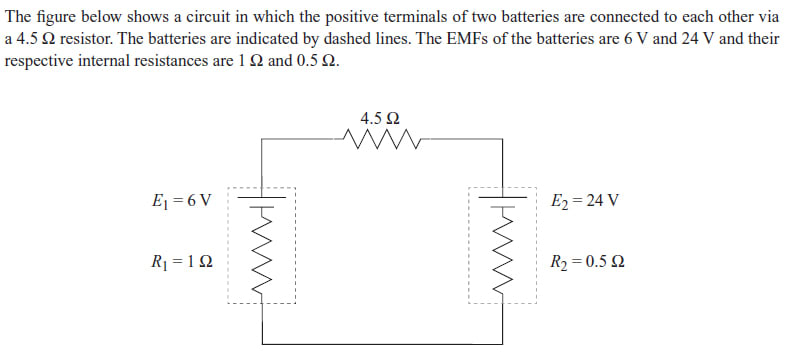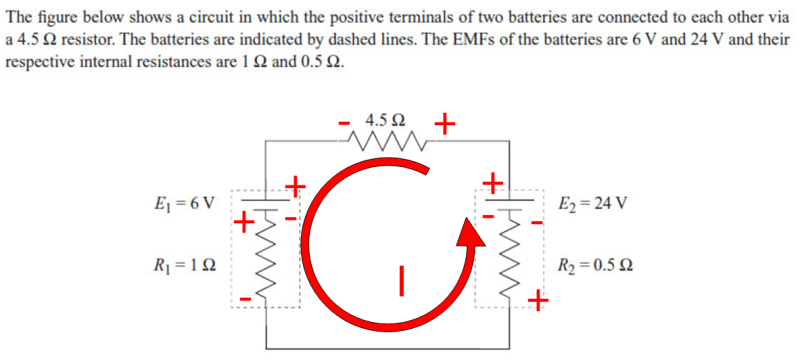Total Novice
Electrical
EDIT:
Just realised now I didn't post the actual question. So sorry everyone.
The question says "What is the resultant EMF in the circuit?"
Hello,
I am not an electrical engineering student/engineer, but I have a related question I was hoping someone could help answer.
Here is a picture of the question:

This is not homework.
I would like to know, the formula for EMF (from what I have found online) is e = V + Ir where e = the electromotive force, V is the volts, I is the current, and r is the internal circuit. But the answer for this is simply "24 - 6 = 18", and the explanation for this is that the batteries's positive terminals are facing the each other so the voltage is working against each other, and the 24V one is going to over power the 6V one. That is all logical even if you don't have any electrical circuit knowledge, but what I don't understand is what happened to the e = V + Ir formula? Why was this not used at all? People who were discussing this question also said that if the batteries were facing the same way, the EMF would simply be 24 + 6 = 30. Again, the formula is not used. Is the EMF simply a sum of the 2 battery's voltages?
Thank you in advance.
Just realised now I didn't post the actual question. So sorry everyone.
The question says "What is the resultant EMF in the circuit?"
Hello,
I am not an electrical engineering student/engineer, but I have a related question I was hoping someone could help answer.
Here is a picture of the question:

This is not homework.
I would like to know, the formula for EMF (from what I have found online) is e = V + Ir where e = the electromotive force, V is the volts, I is the current, and r is the internal circuit. But the answer for this is simply "24 - 6 = 18", and the explanation for this is that the batteries's positive terminals are facing the each other so the voltage is working against each other, and the 24V one is going to over power the 6V one. That is all logical even if you don't have any electrical circuit knowledge, but what I don't understand is what happened to the e = V + Ir formula? Why was this not used at all? People who were discussing this question also said that if the batteries were facing the same way, the EMF would simply be 24 + 6 = 30. Again, the formula is not used. Is the EMF simply a sum of the 2 battery's voltages?
Thank you in advance.

